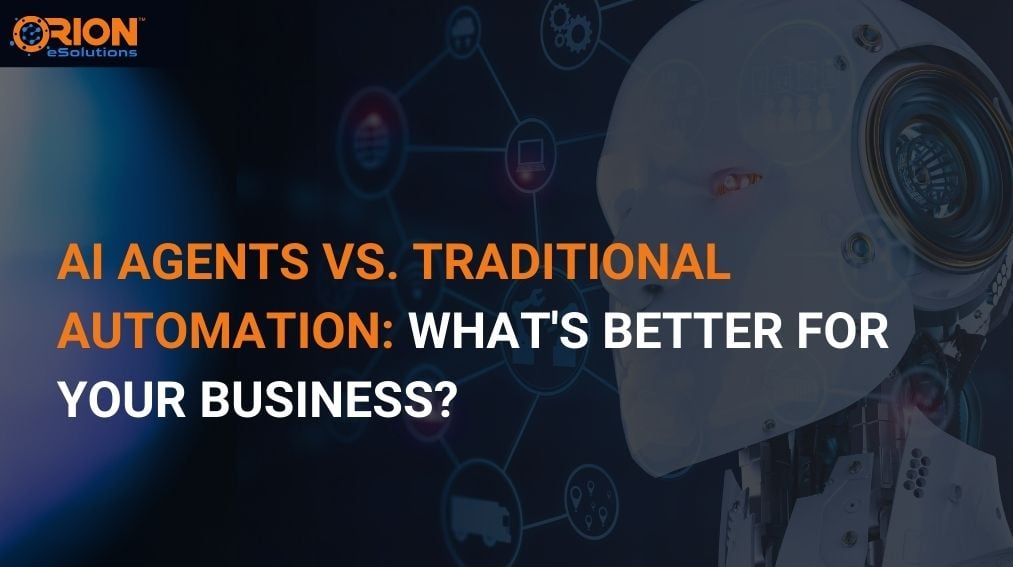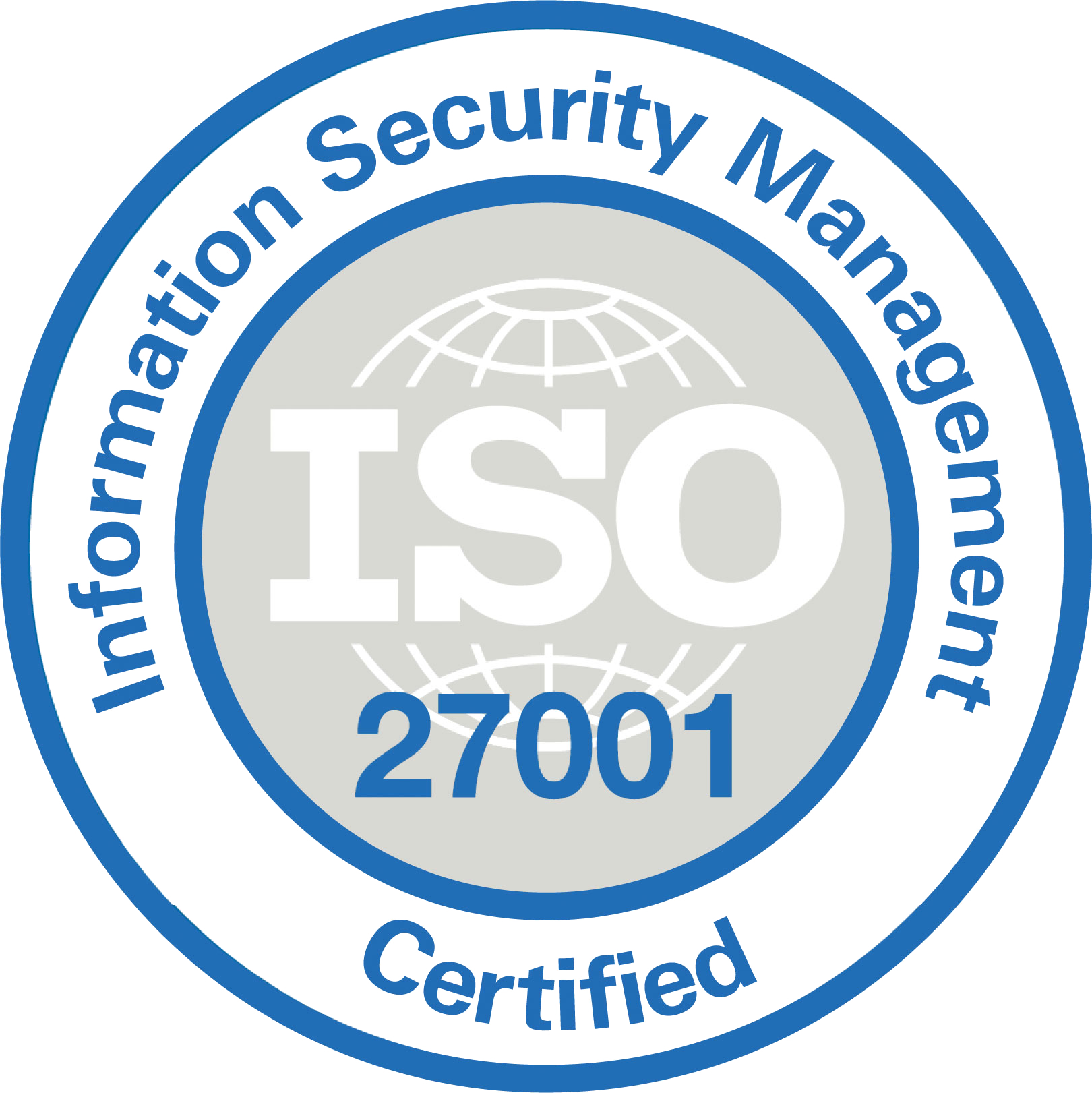In the dynamic and competitive business environment, scaling is essential. However, many businesses find it overwhelming to choose between AI agents and traditional automation for efficient scaling. Are you one among them?
Let us understand both these briefly to help you make an informed decision when consulting a traditional automation or AI development company.
Traditional automation and AI agents: What are they?
A. Traditional automation
Traditional automation leverages hardware or software systems. Additionally, it relies on a set of pre-defined rules, scripts, programming, or workflows to complete assigned activities that are repetitive in nature. The primary goal of traditional automation is to save time, enhance efficiency, and significantly reduce errors.
Some significant examples of traditional automation include scripts and macros used to automate spreadsheet activities, robotic process automation used for report generation and data entry, and workflow automation tools used in ERPs and CRMs.
B. AI Agents
As the name suggests, AI agents are artificial intelligence-powered software. They autonomously recognize inputs, create a course of action, and act accordingly in ever-changing situations. These agents adapt things according to the available data, allowing them to function in different situations without compromising accuracy and efficiency.
It is essential to note that AI agents use technologies like NLP (Natural Language Processing), machine learning, Large language models, and others to undertake a variety of tasks ranging from simple to complex ones.
The best part about these agents is that they need no excessive manual inputs to conduct or lead activities like process optimization, customer interactions, and others.
How do traditional automation and AI agents work?
AI agents and traditional automation follow a step-based process. It is briefly explained as follows:
A. The working of traditional automation
– The system receives a series of tasks requiring automation.
– Business rules, including scripts, workflows, and statements, are all clearly mentioned.
– Tools like macros and RPA bots are set up to ease the execution of rules utilizing conventional automation.
– On detecting events like uploading the document or submission of a form, the system performs a defined task with the help of a step-based process.
– As soon as the task is completed, the system notifies the relevant authority or closes the process.
B. The working of AI Agents
– AI agents gather information and inputs from different sources across formats.
– They leverage technologies like ML and NLP to interpret the input’s nature and context.
– The agent decides the course of action after considering the rules, training data, real-time learning, and memory.
– As per the requirement, the agents will connect to databases, APIs, and other systems to complete the assigned action or task.
– The AI agents for lead generation review feedback to improve decision-making, accuracy, and future performance.
What is the difference between traditional automation and AI agents?
A brief comparison of traditional automation and AI agents is as follows:
| Basis | Traditional Automation | AI Agents |
| Definition | They are rule-based systems capable of automating predictable and simple business tasks or functions. | They are intelligent systems or software capable of perceiving inputs, taking actions, and making decisions autonomously. |
| Asaptability | Traditional automation cannot handle changes very well. | AI agents can adapt to changes and respond to work easily. |
| Intelligence level | Follows pre-defined instructions or rules. | Learns and adapts from previous interactions to improve and make smart decisions. |
| Data handling | Works well on structured data. | Capable of working with and analysing semi-structured, unstructured, and structured data as input. |
| Technology used | Uses macros, scripts, RPA, and workflow engines. | Leverages NLP, APIs, ML, and vector databases. |
| Learning capability | Requires manual training or programming for new tasks. | Can learn from feedback, past interactions, and data. |
| Decision making | Follows pre-defined rules. | Can understand any context, consider real-time analysis, and work on historical data. |
| Use case complexity | Ideal for repetitive and simple tasks. | Ideal for multi-step, complex tasks with variable or uncertain outcomes. |
| Response flexibility | Can provide pre-written responses only. | Can engage in context-aware, dynamic, and human-like conversations. |
| Context awareness | Nill | High |
| Integration | Can be integrated using UI-level automation or custom APIs. | They are API-native and can fetch data, update systems, or self-invoke tools. |
| Human-like interaction | Very limited | Utilizes speech-to-text, NLP, and other technologies to engage in human-like and natural conversations. |
| Maintenance requirements | High maintenance | Low maintenance |
| Deployment time | Comparatively low | Initial setup might take a long time. |
| Scalability | Limited | Highly scalable to handle complexity, tasks, and workload. |
| Cost efficiency | Low upfront expense but high ongoing maintenance. | High upfront investment but better ROI via automation of complex tasks. |
| Suitability for dynamic tasks | Poor | Excellent |
| Evolution capabilities | Static | Evolving |
When to choose traditional automation and AI agents?
Both traditional automation and AI agents offer different features and benefits. While it is advisable to choose the former if you want to automate rule-based and static workflows, you can choose the latter if you wish to create adaptive, highly intelligent, and scalable systems. Let us understand this a bit better with the help of a tabular representation.
| Basis of selection | Traditional automation | AI agents |
| Task complexity | Low | High |
| Decision-making | When tasks do not require autonomous decision-making. | When tasks require autonomous decision-making. |
| Data type | Structured data | Unstructured or mixed data in different formats. |
| Learning and adaptation requirements | If the system does not require adaptation and learning. | If the system requires adaptation and learning. |
| Scalability | No scalability requirement. | Requires long-term scalability. |
| Human-like interactions | For simple responses. | For conversations that mimic humans. |
Why AI Agents are better for your business?
AI agents offer several benefits, including automation of tasks, enhanced efficiency, scalability, real-time decision-making, and better personalization.
They are an excellent choice if your business deals with dynamic and large data. It is because these agents are capable of processing enormous datasets and identifying patterns quickly as compared to conventional software. They are better because they offer the following:
– Improved customer interaction due to AI chatbots’ faq pages.
– Growth, all thanks to predictive analysis.
– Process optimization
– Enhanced customer engagement due to tailored AI-driven experiences.
– Increase in market growth due to dynamic and smarter systems.
Wrapping up
The decision to choose between traditional automation and AI Agents depends on several factors specific to your business. Professionals recommend choosing traditional automation to handle repetitive and time-intensive tasks. Similarly, AI agents are used for complex tasks and dynamic work environments.
Frequently Asked Questions
Q. What is the main difference between AI agents and traditional automation?
Traditional automation sticks to pre-defined rules, and AI agents utilize artificial intelligence along with other technologies like NLP and ML to take actions and make decisions.
Q. Is it costly to implement AI agents?
The cost of developing and implementing these agents for your business depends on the type of agent and its use case. Please note that the implementation cost can appear to be high initially; however, with cost reductions and long-term benefits, it becomes worthwhile.
Q. How can AI agents benefit my business?
Some significant benefits of AI agents include:
– Increases efficiency
– Elevates process intelligence
– Adapts to new data
– Helps with tackling complex decisions
To understand these agents and their benefits in detail, consult experts offering AI development services in USA.









